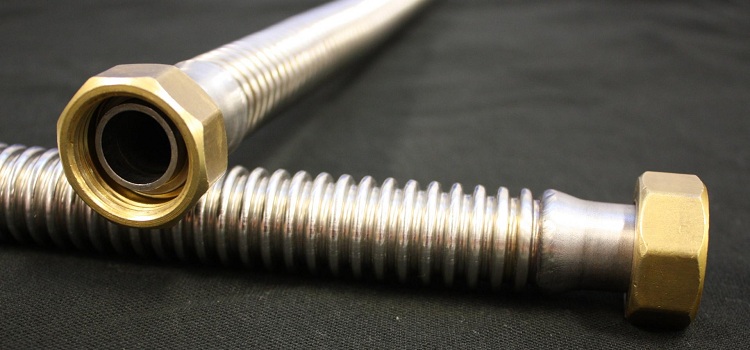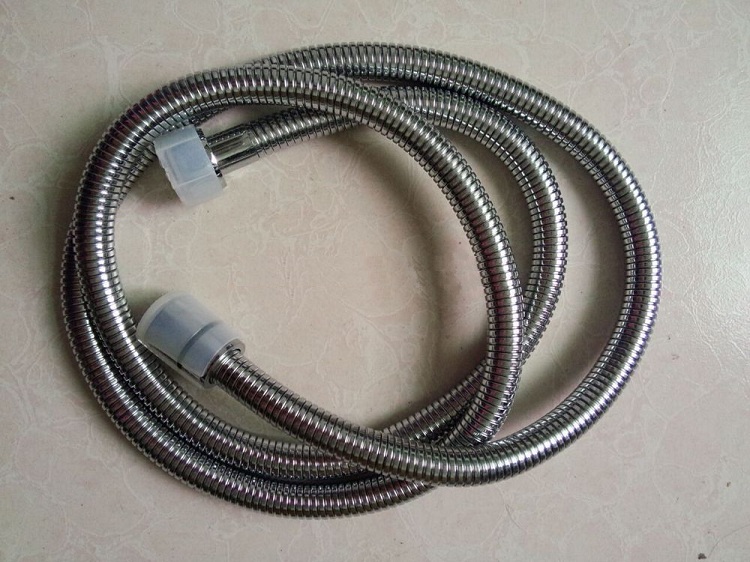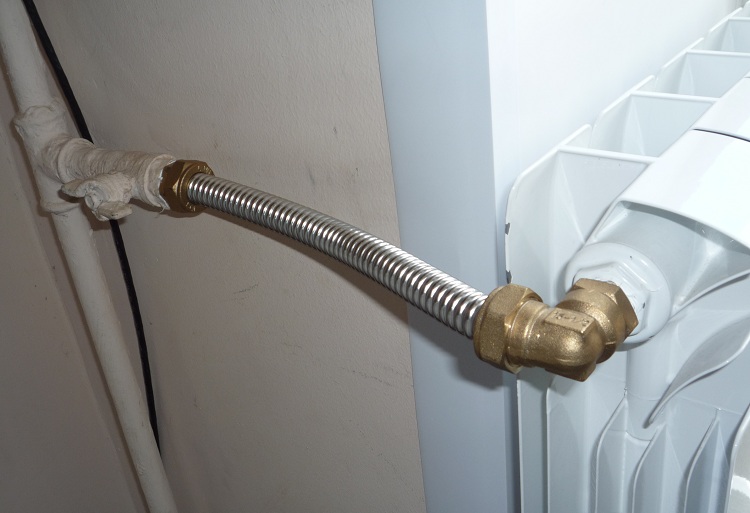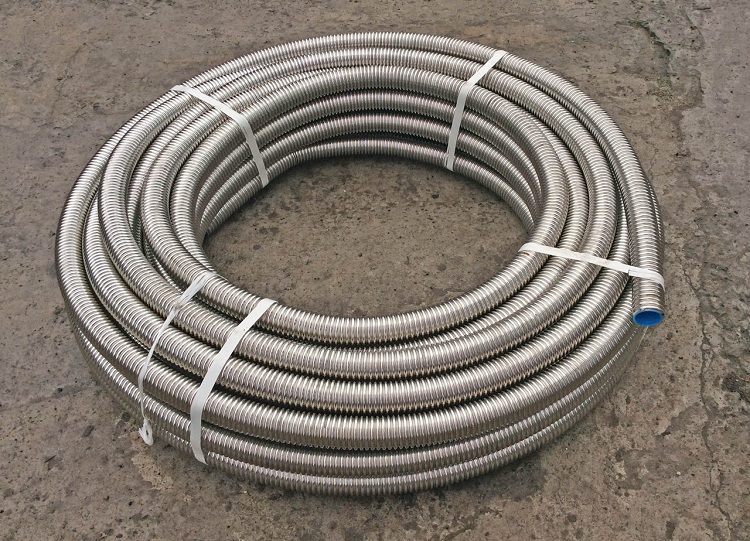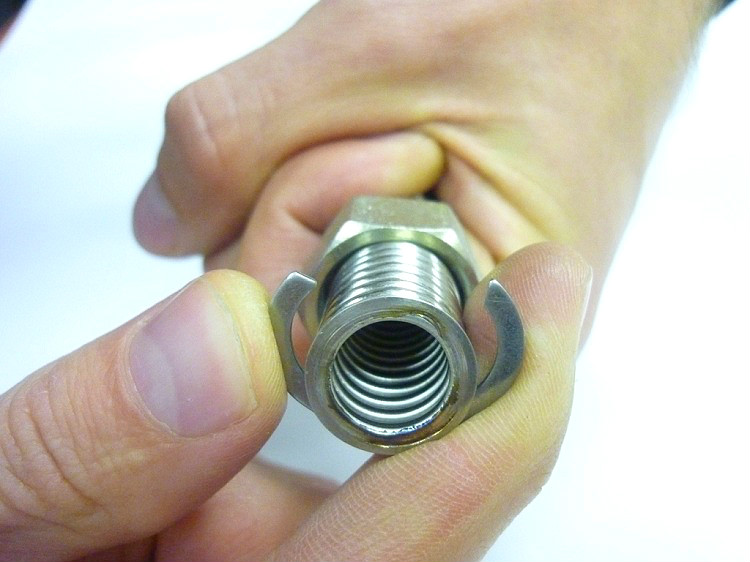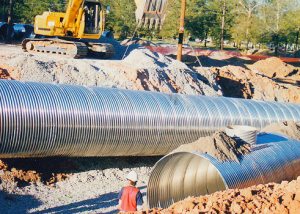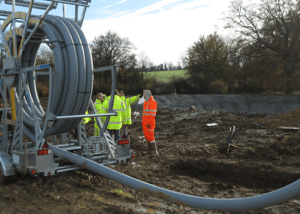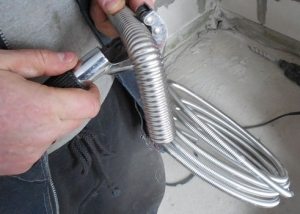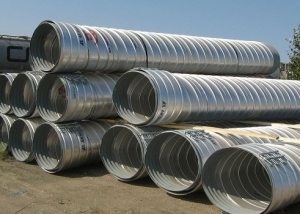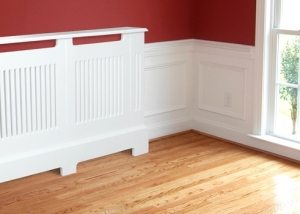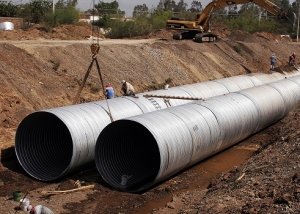Corrosion-proof corrugated pipes for heating are a relatively new product with wide distribution prospects. They are adapted for operation at elevated temperatures and a significant range of operating pressure. Installation is carried out without the use of special equipment. Products bend almost at an arbitrary angle, while the duct does not narrow.
Content
How is a corrugated pipe made for heating
The technology for the production of stainless steel corrugated pipes for heating was developed in Japan. A stainless pipe corrugation for heating is born after passing through several stages of the technological process:
- High-quality steel tape is fed to the forming line. Corrugated pipes are characterized by a low carbon content and the presence of chromium (18 percent) and nickel (8 percent) in the alloy. Having passed the system of bending machines, the steel tape turns into a cylindrical billet.
- By means of special clamps during rolling, a corrugated stainless steel pipe is obtained from a smooth-walled cylindrical pipe.
- Next, the pipe is fed into a closed vessel filled with a special gas mixture. It is with this mixture that the high quality of the weld and the ability of the product to successfully resist the effects of corrosion are achieved. Another circumstance that improves the quality of the product is the execution of welding joints with automatic equipment. The exclusion of the human factor avoids accidental errors in the production of work.
- Plasticity of the corrugated stainless steel for heating is imparted during annealing. Carrying out heating to a high temperature (950-1150º C) followed by cooling to 200-400 º C allows to achieve more bends / bends during operation. There are no external differences between a product that has undergone annealing and not annealed, but the difference in quality and, consequently, in cost, is very significant.
- The resulting products are cut into measuring sections up to fifty meters long and coiled up.
A stainless steel corrugation pipe is tested for tightness by immersion of the bay in water with simultaneous high pressure air supply.
Technical Specifications of Corrugated Stainless Steel Pipe
Corrugated stainless steel heating pipes are available in just a few standard sizes. Standard values for the inner diameter of such pipes: 15, 20, 25 and 32 mm. The production of larger diameter products and non-standard sizes is not difficult, but is carried out exclusively by agreement between the customer and the manufacturer.
The operating temperature range is from -50º C (and the flexibility of the corrugation is maintained even at -40º C) to + 800º C.Naturally, at such temperature rises, no one uses a corrugated pipe, since the upper value of the operating temperature is limited by plastic elements of the fitting to + 110º C, otherwise they will melt. However, a short-term temperature jump up to + 150º C. is allowed.
Important! You can bend the corrugation almost as you like, but the standards set a limit value for bending equal to three times the diameter value.
Corrugated stainless steel is distinguished by simply incredible impact strength, which allows it to carry sudden pressure surges of the working medium without any damage. The declared parameters indicate a maximum pressure of 50 atm, but the product can withstand breaking even four times more power. The magnitude of the working pressure is 15 atm. Corrugation is characterized by absolute oxygen impermeability and a low roughness coefficient of 0.008.
Subject to operating rules, manufacturers guarantee at least twenty-year trouble-free operation of their products. At the moment, corrugated stainless steel in the heating systems has not been used in the Russian market for so long. Therefore, it is not possible to verify the claims of foreign manufacturers on domestic experience for the time being.
The advantages of using stainless steel corrugations in heating systems
For a relatively short time of operation, stainless steel corrugation has managed to demonstrate a considerable list of advantages over other materials used in the installation of heating systems. What is famous for the invention of Japanese engineers:
- flexibility. If you need to bend the corrugation at a certain angle, then this is done without the use of tools and the application of extra effort, with your hands. Due to the highest flexibility of the material, there is no need for numerous connections, which significantly affects the efficiency of the system and the cost of installation;
- strength;
- high heat transfer coefficient. Due to this property, corrugated stainless steel can be successfully used instead of a heating radiator;
- anticorrosion and chemical inertness. Neither the influence of the working environment, nor the influence of atmospheric phenomena will affect the functioning of corrugated stainless steel pipes. The danger of electrochemical corrosion is eliminated by conducting a simple grounding procedure and / or arranging a protective shell;
- the possibility of closed styling. Such a pipe is allowed to be laid both on walls and on the floor;
- resistance to sudden changes in temperature and pressure. Corrugated pipes are not afraid of either water hammer or the most terrible threat in the form of defrosting, which destroys heating systems constructed from similar products from polymer and metal materials. When the coolant freezes, its expansion in volume will be easily compensated by the corrugation, it will not undergo deformation and will not fail. And you can warm the frozen area even with a blowtorch;
- smoothness of the inner surface. This helps increase pipe throughput. And also does not allow clogging, siltation, etc.
- fungus and mold. And rodents do not pose the slightest threat to a stainless steel;
- adaptability of installation. To install special fittings, two pipe wrenches are required. In principle, you can do without all the other special equipment;
- low weight, which affects for the better during transportation and assembly;
- low noise;
- large length of measured segments. This makes it possible to assemble sufficiently large-scale structures without additional connections;
- almost unlimited service life;
- environmental friendliness.
With such attractive properties, stainless steel corrugated pipes are quite capable of competing with polymer and metal in the arrangement of heating systems. At least a certain niche in the market, thanks to their undeniable merits, they have already won.
What disadvantages of corrugated pipes should not be forgotten
Products lacking flaws do not exist on the market. Even such high-quality products as a corrugated pipe made of an expensive alloy using fairly sophisticated technology are not without drawbacks. Perhaps it’s worth talking not so much about the shortcomings, but about the features of using high-tech products. What you must take into account when working with stainless corrugated pipes for the heating system:
- high cost. Corrugated stainless steel can not be cheap due to the complexity of manufacturing and high cost of raw materials;
- the tendency to accumulate dust in the recesses, which reduces heat transfer and can affect the health status of persons in contact with the products;
- high heat transfer, requiring, in order to avoid heat loss, additional insulation;
- thinness of walls not designed for high mechanical loads. If necessary, a special casing is installed to protect;
- the need for periodic inspection and maintenance of fittings, tightness control of joints, replacement of polymer elements;
- the undesirability of installing the system in a completely hidden form due to the presence of detachable joints in which polymer seals are used. However, this fact does not matter when arranging a warm floor;
- desirability / need for protection against electrochemical corrosion.
Another feature of corrugated stainless steel that arises from the presence of stiffeners that resist the passage of the flow of the working medium deserves to be studied.
Note! Purely theoretically, a corrugated pipe should have a higher hydraulic resistance than a smooth-walled one and give turbulence to the flow of the working fluid. However, practical evidence that corrugated pipes, by virtue of the described property, cannot be used in gravity systems with a naturally circulating coolant, is not provided.
The appearance of the corrugated pipe in the arrangement of the heating system is unusual, for some it may seem anti-aesthetic. Note that products of different colors are produced, so there is room for designer delights. Of course, the appearance of the corrugation-stainless steel can be neglected, making a hidden installation.
How to choose and install corrugated pipes for heating
When buying a corrugated pipe, it is advisable to consider the marking applied to the wrapper of the bay, since it is not possible to print it on the surface of the product itself. Violation of the integrity of the packaging may be evidence of fraud when a substitution of goods of lower value. And the difference in the cost of corrugated pipes produced by different manufacturers is quite significant.
High-quality corrugated stainless steel pipe is distinguished by:
- ease of bending;
- evenness and integrity of the seam;
- uniform pitch;
- lack of visually detectable defects.
For installation, you need wrenches and a tool with which the pipe will be cut at right angles. It is recommended to select brass fittings, so that in the future it is not required to periodically tighten the connections. For brass fittings, the silicone gasket and the comb ring ensure perfect tightness.
The installation process goes in approximately the following order:
- The fittings are connected to plumbing fixtures.At the connection points, given the increased load, it is advisable to provide for the installation of supports.
- Pipes are cut into pieces of the desired length, the edges of the sections are checked for bumps and burrs.
- After inserting the corrugation into the fitting, tighten with nuts. If necessary, the pipe gently bends at the smallest possible angle. It is highly undesirable to allow sagging corrugations stainless steel. Hidden corrugated pipe sections passing close to the electric network are recommended to be protected with a steel casing from electrochemical corrosion generated by eddy currents.
- Upon giving the pipeline the desired shape, it is attached to the surface of the wall.
- It checks the operation of the mounted system under pressure during a test run.
Using corrugated stainless steel pipes for arranging a heating system is not a cheap pleasure. But the output is a very efficient heating system, designed for decades of operation.
